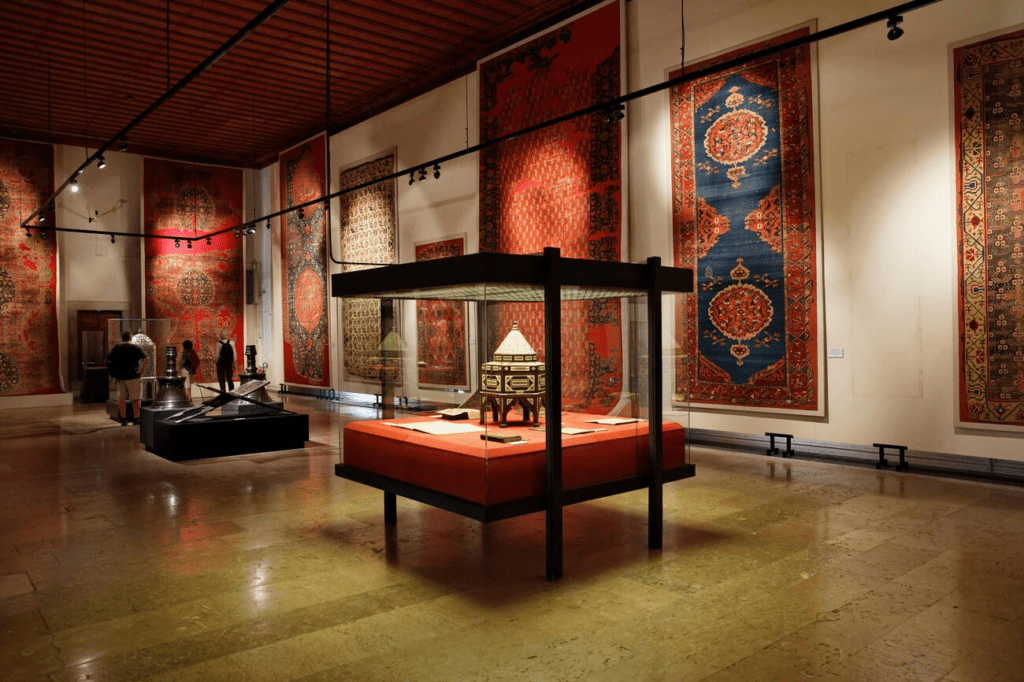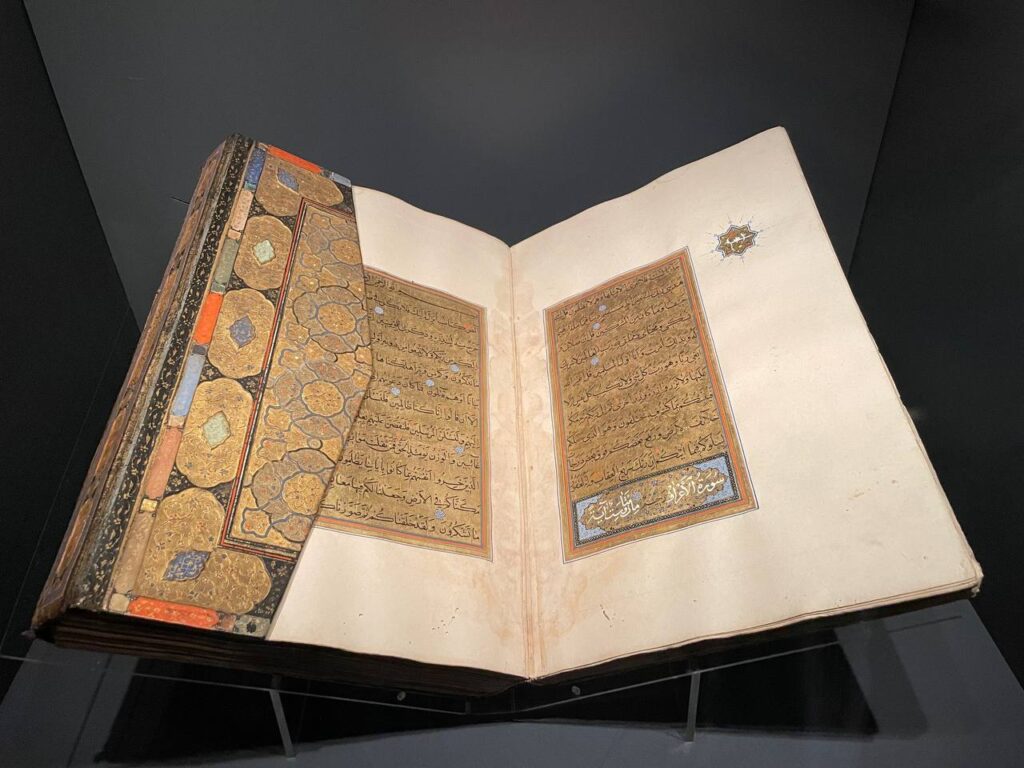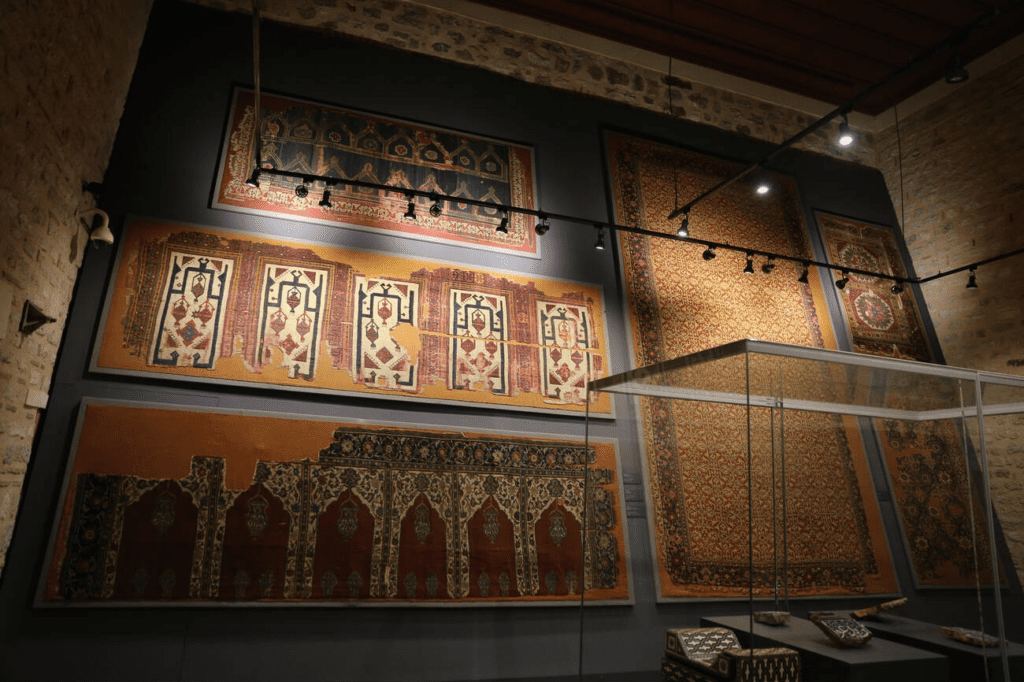Pay Once and Have Free Attractions Entry for 2, 3, 5 or 7 days
The Museum of Turkish and Islamic Arts in Istanbul is a treasure trove of exquisite artifacts and art pieces that reflect the rich history of Turkey and the Islamic world. Housing a vast collection of items from various periods and regions, this museum provides a glimpse into the artistic and cultural heritage of the Islamic world. In this article, you’ll find valuable information about the museum’s location, transportation options, hours of operation, admission fees, and highlights of the exhibits. We’ll also share tips to make your visit more enjoyable, and provide insights into the fascinating history of the museum and its collection.

The Architecture of the Museum of Turkish and Islamic Arts
The Museum of Turkish and Islamic Arts is housed in the historic Ibrahim Pasha Palace, which was built in Istanbul in the 16th century during the reign of Ottoman Sultan Suleiman the Magnificent. The palace, a fine example of Ottoman architecture, features beautifully decorated rooms and courtyards, providing an elegant backdrop for the museum’s exhibits.
The museum’s layout consists of several exhibition halls, each dedicated to a specific art form or period, making it easy for visitors to navigate and explore the diverse collections.
Read more about Istanbul Archaeological Museums >>
Entry Ticket to the Museum of Turkish and Islamic Arts + Guided Tour: Buy Online Without the Queue
Exhibits at the Museum of Turkish and Islamic Arts
The museum boasts a wide range of collections, spanning various art forms and periods. Some key sections of the museum include:
Islamic Calligraphy
Marvel at the intricate beauty of handwritten Islamic calligraphy, manuscripts, and ancient Qurans dating from the 7th to 20th century. Don’t miss the imperial decrees and warrants bearing the tuğra, the signatures of Ottoman rulers.

Turkish Ceramics
Explore the museum’s impressive collection of ceramics, including Iznik tiles and pottery, which are known for their vibrant colors and intricate designs.
Wood Works
Admire wooden artworks adorned with mother-of-pearl and ivory, as well as 12th- and 13th-century wooden columns and doors from Damascus and Cizre.
Islamic Metalwork
Discover the evolution of Turkish metal crafts in Anatolia, with items such as mirrors, jars, incense burners, and lamps made from brass, silver, and bronze.
Turkish Carpets and Rugs
The museum houses the world’s oldest and largest collection of carpets and kilims, with over 1,700 carpets and nearly 500 rugs on display, including rare Seljuk carpets from the 13th century.

Islamic Textiles
Examine the museum’s exquisite collection of Islamic textiles, featuring items such as clothing, prayer rugs, and intricate embroidery.
Ethnography
Gain insight into the daily life of Ottoman Istanbul and various cultures in Turkey, especially nomadic groups, through the museum’s ethnographic exhibits.
Turkish Glassware
Explore the museum’s glass, tile, terracotta, and ceramic objects found during excavations in Abbasid centers, including Samarra and Raqqa (Syria).
Stone Art
Delve into the world of stone art, with exhibits from the Mamluk, Umayyad, Abbasid, Seljuk, and Ottoman periods. Among the most valuable objects in this section are the Seljuk tombstones, depicting mythical creatures and hunting scenes, and a milestone made by the Umayyad caliphate.
Islamic Arms and Armor
Witness the craftsmanship and design of Islamic arms and armor, including beautifully decorated helmets, shields, swords, and daggers.
Don’t Miss The Best Tours and Cruises in Istanbul
Highlights of the Museum of Turkish and Islamic Arts
Some must-see exhibits and famous pieces of art and artifacts at the museum include:
- The oldest known carpet in the world, the Pazyryk Carpet, dating back to the 5th century BCE.
- The 14th-century Seljuk Mihrab, a magnificent example of woodcarving and mother-of-pearl inlay work.
- A 16th-century Iznik tile panel depicting the Kaaba, showcasing the height of Iznik tile artistry.
- An exquisite Quran manuscript from the 9th century, adorned with gold and lapis lazuli.
Discover the Archeological Wonders of the City with Guided Tours
Museum of Turkish and Islamic Arts: Opening Hours and Admission Fees
Getting to the Museum of Turkish and Islamic Arts
The museum is located in the heart of Istanbul’s historical district, Sultanahmet, adjacent to the famous Hippodrome. It is within walking distance of major attractions such as Hagia Sophia, Topkapi Palace, and the Grand Bazaar. The nearest T1 tram stop is Sultanahmet, just a few minutes away. See the location…
Opening Hours of the Museum of Turkish and Islamic Arts
The Museum of Turkish and Islamic Arts welcomes visitors every day to explore its rich collections and immerse themselves in the history and culture of Turkey and the Islamic world.
Summer Period Hours (April 1 – October 31)
- Opening time: 09:00
- Closing time: 19:30
Winter Period Hours (October 31 – April 1)
- Opening time: 09:00
- Closing time: 18:30
Admission Fee (Ticket Price) to the Museum of Turkish and Islamic Arts
- 17€.
Free Ticket to the Museum of Turkish and Islamic Arts + Guided Tour with Istanbul E-Pass
Uncover Istanbul’s historical treasures and rich cultural heritage with the E-Pass, granting you access to 50+ attractions and services across the city. Included with the pass is free entry to the Museum of Turkish and Islamic Arts, where you can explore stunning collections of artifacts and masterpieces that provide a glimpse into Turkey’s artistic past.
Tips for Visiting the Museum of Turkish and Islamic Arts
- The best time to visit the museum is during the morning hours, when it’s less crowded, allowing for a more peaceful exploration of the exhibits.
- Allocate at least two hours for your visit, as there is much to see and appreciate.
- Photography is allowed, but without flash or tripods.
- Consider taking a guided tour for a more informative and engaging experience.
Café in the Museum of Turkish and Islamic Arts
After exploring the museum, relax at the charming Ottoman-style café, where you can enjoy a traditional Turkish coffee and snacks. You can even learn how to prepare an authentic Turkish coffee from the friendly staff.
What is near the Turkish and Islamic Arts Museum?
The Museum of Turkish and Islamic Arts is conveniently located near several other major attractions in Istanbul, including:
Hagia Sophia Museum
The Hagia Sophia, an iconic symbol of Istanbul, was originally built as a cathedral by Emperor Justinian in 537 AD. It later served as a mosque under Ottoman rule and was eventually converted into a museum in 1935. This architectural marvel boasts stunning Byzantine mosaics, a massive central dome, and rich historical significance, making it an essential visit for anyone exploring Istanbul. Read more…
Topkapi Palace Museum
Once the primary residence and administrative center of the Ottoman Empire, Topkapi Palace is a sprawling complex featuring stunning courtyards, chambers, and pavilions. The museum houses an extensive collection of Ottoman artifacts, including imperial treasures, weapons, religious relics, and exquisite porcelain. Don’t miss the Imperial Harem, which provides insight into the lives of the sultans’ wives and concubines. Read more…
Grand Bazaar
One of the world’s oldest and largest covered markets, the Grand Bazaar is a labyrinth of over 4,000 shops selling a wide variety of goods, from spices and textiles to jewelry and ceramics. With its colorful stalls, vibrant atmosphere, and rich history dating back to the 15th century, the Grand Bazaar offers a unique shopping experience that is quintessentially Istanbul. Read more…
Basilica Cistern
This ancient underground cistern was built during the reign of Emperor Justinian to store water for the Great Palace and surrounding buildings. The Basilica Cistern features 336 marble columns, creating an eerie yet captivating atmosphere. Visitors can walk along the raised platforms and marvel at the cistern’s sheer size and the unique Medusa head sculptures, which serve as column bases. Read more…
Blue Mosque
The Blue Mosque, officially known as Sultan Ahmet Mosque, is an architectural masterpiece built in the early 17th century by Sultan Ahmet I. Named for the more than 20,000 blue Iznik tiles that adorn its interior, the mosque is still an active place of worship, as well as a popular tourist destination. The mosque’s six minarets, cascading domes, and spacious courtyard make it an iconic part of Istanbul’s skyline. Read more…
Conclusion
The Museum of Turkish and Islamic Arts is a must-visit destination for anyone interested in the rich artistic and cultural heritage of Turkey and the Islamic world. With its stunning collection, historic architecture, and convenient location, this museum offers a captivating and educational experience for visitors to Istanbul.
Visitor Information
-
💵
Entrance Fee: 17€
-
⛔
Closed: No
-
📍
Location: Binbirdirek, At Meydanı Cd No:12, 34122 Fatih/İstanbul
⌛Opening Hours: from 09:00 to 19:30 (1 April – 31 October); from 09:00 to 18:30 (1 November – 31 March).
FAQs
What are the opening hours of the Turkish and Islamic Arts Museum?
The museum is open every day. During the summer period, from April 1st to October 31st, the Museum of Turkish and Islamic Arts opens at 9:00 AM and closes at 7:30 PM. During the winter period, from October 31st to April 1st, the museum operates on a slightly shorter schedule, opening at 9:00 AM and closing at 6:30 PM.
Where is the Museum of Turkish and Islamic Arts?
The museum is located in Istanbul’s historical district, Sultanahmet, near the Hippodrome.
How do I get to the Museum of Turkish and Islamic Arts?
The nearest tram stop is Sultanahmet, just a few minutes away from the museum.
Is the Istanbul Museum Pass valid at the Turkish and Islamic Arts Museum?
Yes, the Istanbul Museum Pass provides access to the Museum of Turkish and Islamic Arts, along with several other major attractions in the city.
How much is the ticket for the Islamic Art Museum Istanbul?
The entrance fee is 17€.
Which museum has the greatest collection of Islamic artifacts in the world?
The Museum of Turkish and Islamic Arts in Istanbul is renowned for its extensive and diverse collection of Islamic artifacts and art pieces.
What can you see in the Museum of Islamic Art?
You can see a wide range of artifacts, including calligraphy, ceramics, textiles, metalwork, carpets, glassware, and stone art, spanning various periods and regions within the Islamic world.
You Might Be Interested in
- Best Food Delivery Apps in Istanbul: How to Order Food In
- Istanbul in May: Weather & Things to Do, Events in 2024
- April Weather in Istanbul: The Ultimate Guide for Travelers (2024)
- How to Make Turkish Coffee: Step-by-Step Recipe
- Explore Maltepe in Istanbul (Asian Side): Things to Do & See, Hotels, Restaurants (2024)
- Traveling in Istanbul with a Baby: Places to See and Tips for a Pleasant Vacation
- Istanbul Ruines and Constantinopol Sites: A Journey Through Byzantine History
- Galata Tower in Istanbul: Entrance Fee, Opening Hours, History & What to See (2024)
- Istanbul Archaeological Museums: Museums, Tickets, Opening Hours (2024)
- 8 Best Taksim Square Hotels in Istanbul from Luxury to Budget (2024)
Don’t Miss The Best Tours and Cruises in Istanbul